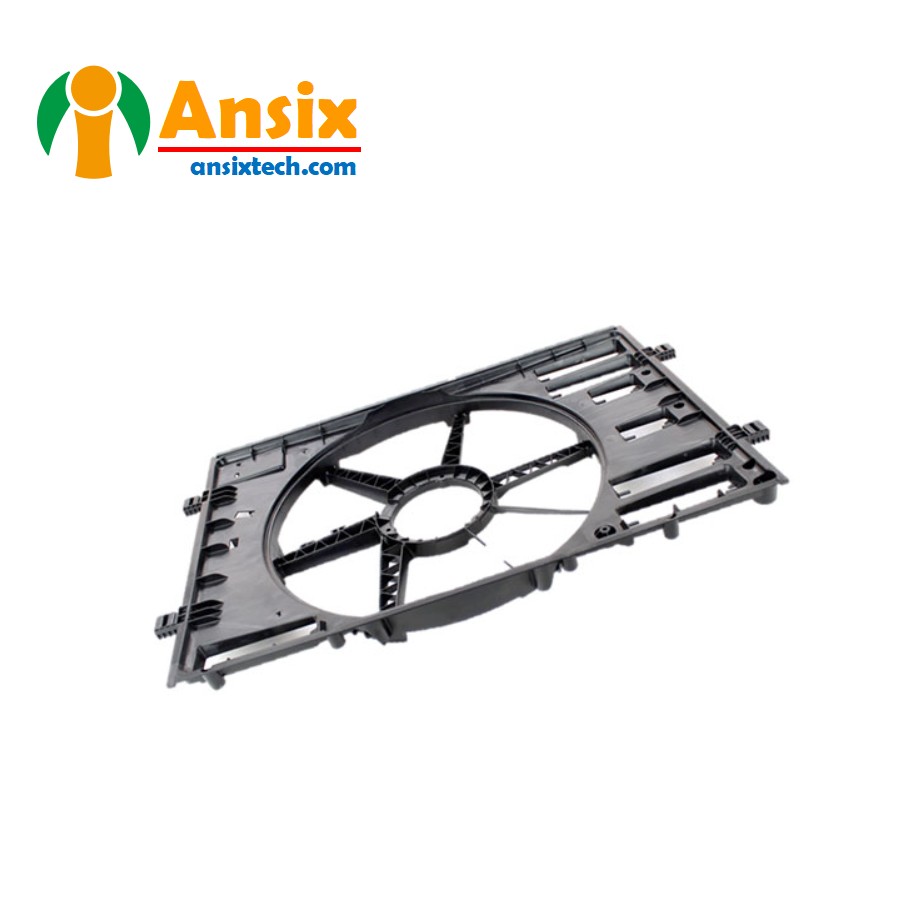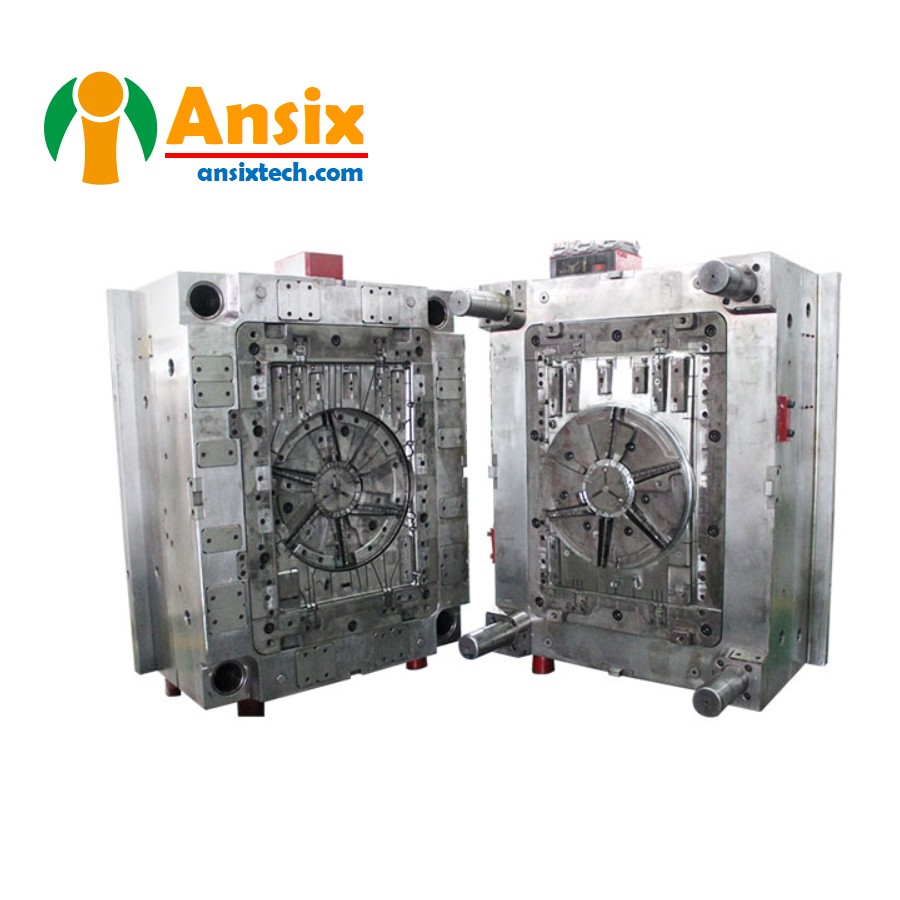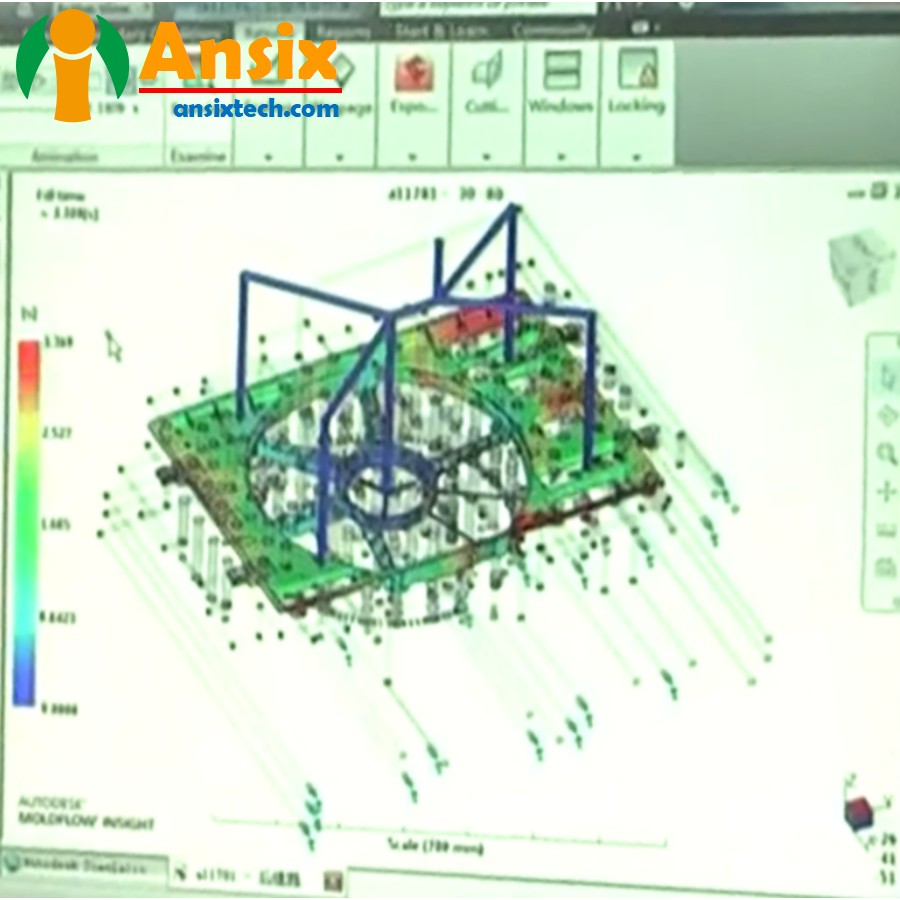Automotive Fan Mould Car water tank cooling fan blades injection molding
FEATURES
- Automotive Fan Mould Car water tank cooling fan blades injection molding
In general, the injection mold and injection molding process for manufacturing automobile water tank cooling blades face some difficulties, such as complex shapes and structures, material selection and processing, etc. However, through reasonable mold design and manufacturing, as well as precise control of injection molding parameters and cooling systems, these difficulties can be overcome and high-quality automotive water tank cooling fan injection molding can be achieved..Please send us a message(Email: info@ansixtech.com ) at any time and our team will reply to you within 12 hours.
-
Mold Description
Product Materials:
PC
Mold Material:
2344
Number of Cavities:
1*1
Glue Feeding Method:
Hot runner
Cooling Method:
Oil cooling
Molding Cycle
38.5s
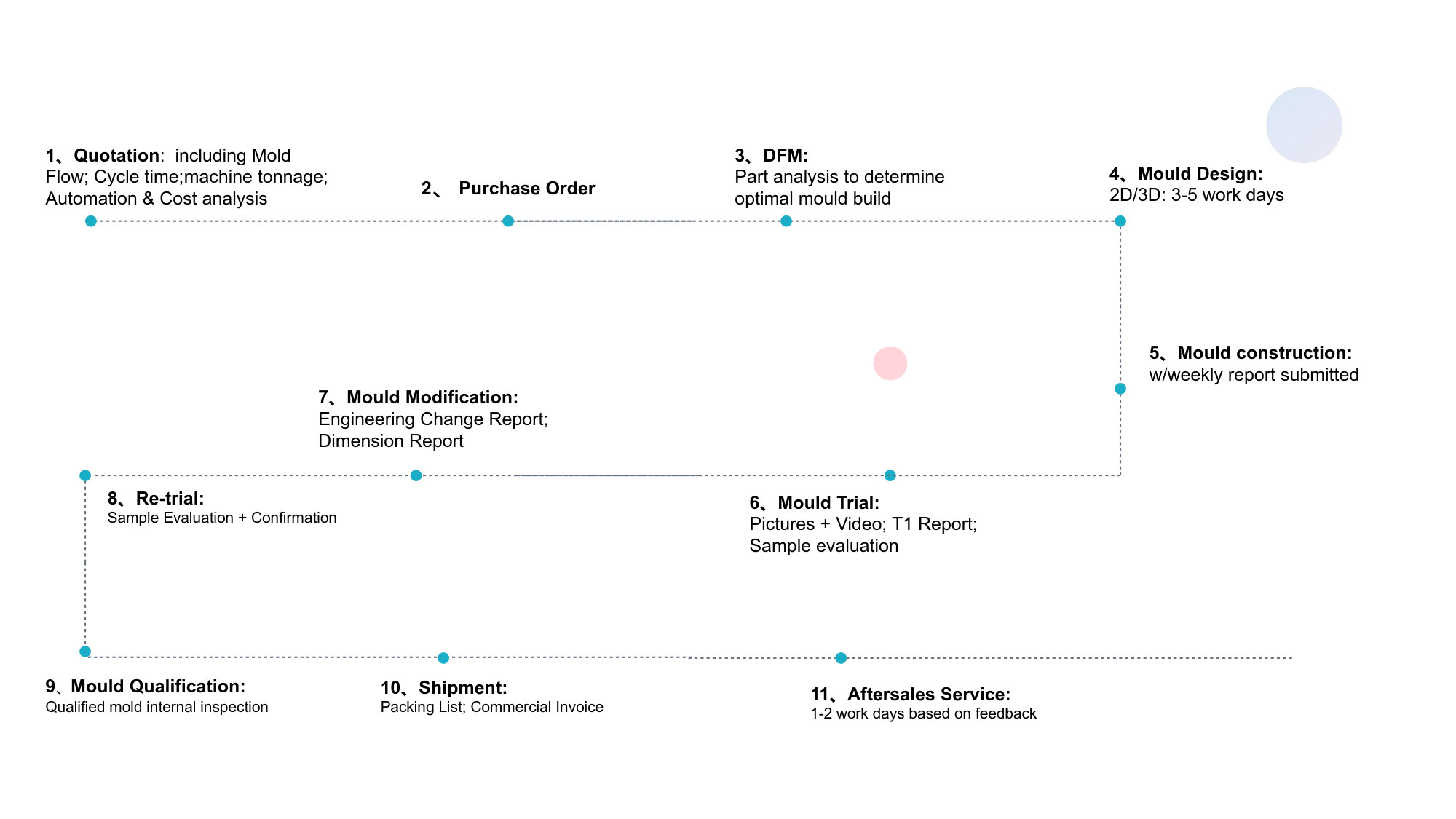
- Mold design and mold flow analysis of automobile water tank cooling fan blade cover are key links to ensure product quality and production efficiency. Here are some of the key design and analysis aspects involved in a general case:Key points of mold designStructural Design: Design the mold structure to ensure that the complex structure and details of the blade cover can be accurately formed.Material Selection: Choose a suitable mold material, usually tool steel with high hardness, high strength and wear resistance, to ensure the service life and stability of the mold.Cooling system design: Design a reasonable cooling system to ensure that plastic materials can be cooled quickly during injection molding and reduce quality problems caused by uneven deformation and shrinkage.Gate design: Reasonable gate design can ensure uniform melt filling and reduce defects such as bubbles and short injection.Mold processing accuracy: Mold processing requires high precision to ensure the size and surface quality of the final product.Mold flow analysis detailsFilling Simulation: Simulate the filling process of melt in the mold cavity, and evaluate parameters such as filling time, filling pressure, and filling speed to predict possible defects such as poor filling, bubbles, and short injections.Cooling Simulation: Conduct cooling simulation to evaluate parameters such as cooling time, temperature distribution and shrinkage to ensure uniform cooling of the entire blade cover and reduce quality problems caused by uneven deformation and shrinkage.Thermal Stress Analysis: Analyze thermal stress and design a reasonable structure and cooling system to reduce the impact of thermal stress on product quality.Mold structure optimization: Based on the mold flow analysis results, the mold structure is optimized, including optimization of the cooling system, gate design, etc., to improve product molding quality and production efficiency.The above are the general key points of mold design and mold flow analysis. These processes and analysis are crucial to ensure the production quality and efficiency of automobile water tank cooling fan blade cover.
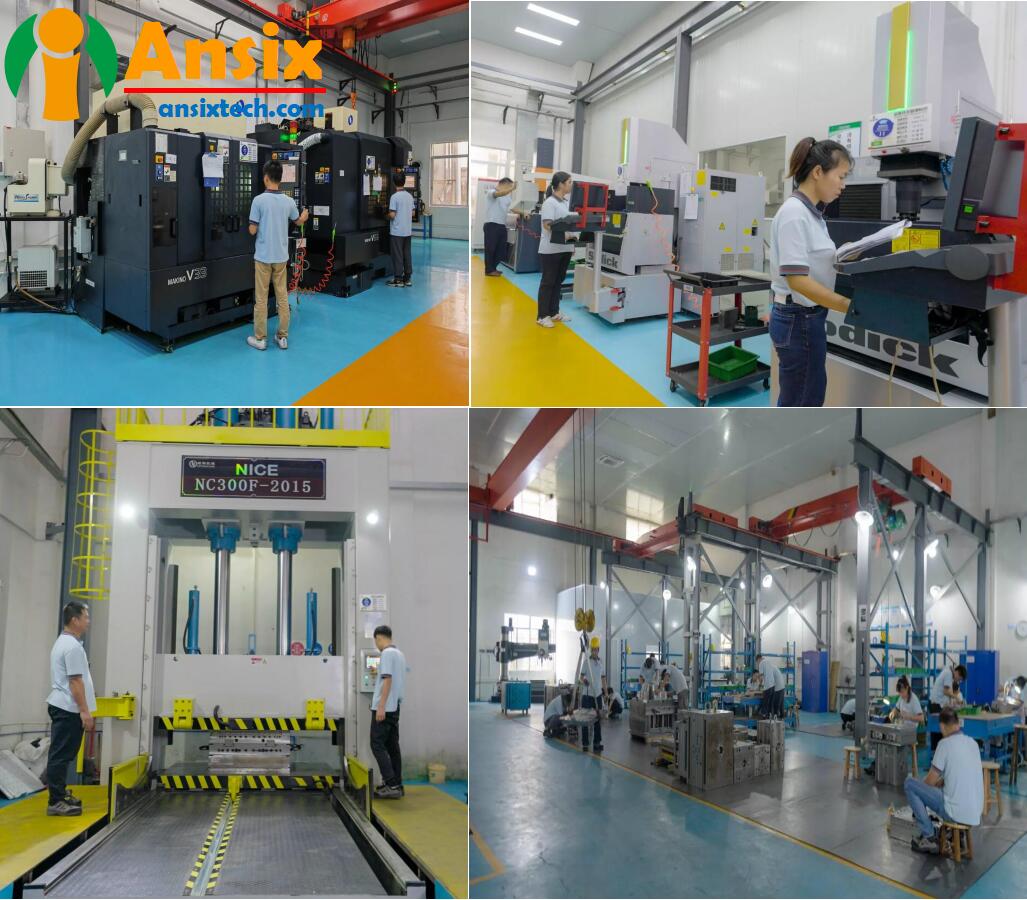
- The following is a brief overview of the automotive water tank cooling fan blade cover mold manufacturing process:The car water tank cooling fan blade cover is an important component in the car cooling system. It is used to cover the cooling fan blades, guide the air flow, increase the heat dissipation effect, and protect the fan blades from damage by external objects. Its manufacturing and processing technology requires multiple links such as mold design, mold processing, and injection molding.Mold designStructural design: According to the shape and size of the blade cover, design the mold structure, including mold cavity, cooling system, gate, etc.Material selection: Choose a suitable mold material, usually tool steel with high hardness, high strength and wear resistance, to ensure the service life and stability of the mold.Cooling system design: Design a reasonable cooling system to ensure that plastic materials can be cooled quickly during injection molding and reduce quality problems caused by uneven deformation and shrinkage.Gate design: Reasonable gate design can ensure uniform melt filling and reduce defects such as bubbles and short injection.Mold processingMold processing includes CNC machining, EDM, wire cutting and other processes to perform precision processing of mold parts.Mold assembly: Assemble mold parts, including installation of cooling system, gate system, etc.Mold debugging: debug the assembled mold to ensure the accuracy and stability of the mold.Injection MoldingThe injection molding process requires selecting the appropriate injection molding machine and process parameters according to the specific blade cover design requirements.During the injection molding process, the injection temperature, pressure and speed need to be strictly controlled to ensure product molding quality.The above is a brief overview of the automotive water tank cooling fan blade cover mold manufacturing process. This process requires strict control of every link to ensure the quality and performance of the final product.Automotive radiator cooling fan blade covers usually require the selection of materials with good heat resistance, corrosion resistance and mechanical properties. Here are some common material choices and their properties:Glass fiber reinforced nylon (PA66-GF30): This material has good heat resistance and mechanical strength and is suitable for applications that need to withstand high temperature and high strength requirements. Glass fiber reinforced nylon also has good corrosion resistance and rigidity, and is suitable for use in the manufacture of automotive parts.Polypropylene (PP): Polypropylene has good heat resistance and chemical stability, as well as high impact resistance and rigidity. It is suitable for manufacturing automobile parts that require corrosion resistance and high temperature resistance. .Polyphenylene sulfide (PPS): Polyphenylene sulfide has excellent heat resistance, corrosion resistance and mechanical properties, and is suitable for manufacturing automotive parts in high temperature environments, such as parts in the engine compartment. .Polystyrene (PS): Polystyrene has good molding properties and surface quality, and is suitable for manufacturing automotive parts with high appearance requirements.Aluminum Alloy: Aluminum alloy is a common choice for some applications that require higher strength and corrosion resistance. Aluminum alloy has low density and good thermal conductivity, making it suitable for manufacturing lightweight automotive parts.These materials have different properties in the manufacture of automotive radiator cooling fan blade covers and can be selected based on specific application requirements and cost considerations. When selecting materials, factors such as the product’s use environment, cost, processing performance, etc. need to be comprehensively considered to ensure that the final product has good performance and economy.
- The high-volume injection molding production of automotive radiator cooling fan blade covers requires a combination of automated configuration and process quality assurance to ensure production efficiency and product quality. The following are some possible production and quality control measures:Automated configurationAutomated injection molding production line: Introduce an automated injection molding production line, including automatic feeding, automatic molding, automatic demoulding and other links to improve production efficiency and reduce manual intervention.Intelligent injection molding equipment: Use intelligent injection molding equipment to achieve high-speed, high-precision injection molding, improving production efficiency and product consistency.Automated mold changing system: Use an automated mold changing system to reduce mold changing time and improve production line utilization.Online quality monitoring system: Introduce an online quality monitoring system to monitor product size, appearance, etc. in real time, and detect and handle abnormalities in a timely manner.Process Quality AssuranceInjection molding process parameter control: Strictly control the injection molding process parameters to ensure stable product molding quality.Product size inspection: Use automated size inspection equipment to conduct online inspection of product size to ensure product size stability.Appearance quality inspection: Introduce automated appearance quality inspection equipment to conduct online inspection of product appearance to ensure stable product appearance quality.Quality Record Traceability: Establish a complete quality record traceability system to record and trace quality data during the production process to ensure product quality is controllable.Human-machine collaborationTraining and skill improvement: Provide training to production personnel to improve their operation and maintenance skills of automation equipment to ensure normal operation of the equipment.Personnel participation in quality control: Encourage production personnel to participate in quality control and promptly discover and solve quality problems in the production process.Through the above measures, the injection molding production efficiency and product quality of automobile water tank cooling fan blade covers can be improved, ensuring that the products can meet market demand and improving the competitiveness of the enterprise.


